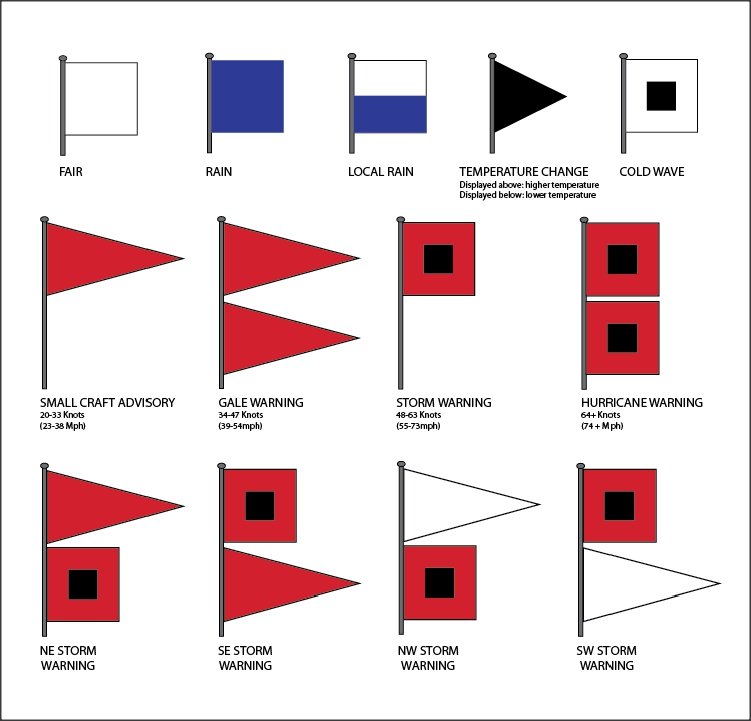Types of Beach Safety & Storm Warning Flags
On your next trip to the beach, keep in mind that conditions might not be as safe as they may appear. Lifeguards will often fly flags of different colors to notify beachgoers of any present dangers.
We have pretty well standardized flags here in the U.S. Although additional colors are sometimes incorporated into the system for different beaches in various parts of the country, the system generally follows that of traffic lights, where green means go, yellow means caution and red means stop.
Flags will get your attention. They’re generally better at grabbing people’s attention than signs. Unfortunately, there are many people that aren’t very competent when swimming at the beach.
They may know how to swim, but the only experience many of them have may be in swimming pools, ponds and lakes, and you have a whole set of hidden hazards at the beach.
Beach Safety Flags
There are ten types of beach safety flags:
Beach warning flags are often visible as swimmers approach a beach, which immediately makes them aware of ocean conditions so they can decide whether or not to go in the water. Without warning flags, beach goers might not be aware of dangerous currents, surf, wildlife or other risky conditions. Absence of Beach Flags Does Not Assure Safe Waters.
You can also find other beach warning signals with different messages for specific beaches and coastal areas:

Green Beach Safety Flag
Meaning: Represents generally calm surf and currents. Swim with usual caution
When you spot a green flag along the beach, swimming or recreational conditions are considered ideal. The green flag signifies low hazards and calm conditions, Beach goers can enjoy the water and swimming while remaining alert to changing conditions and currents.
So have fun and enjoy your beach day – but always keep an eye out for changes in the conditions. Sometimes Mother Nature does whatever she wants!
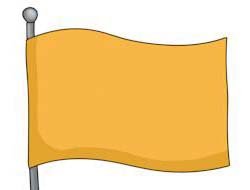
Yellow Beach Safety Flag
Medium Hazard: Moderate Surf and/or Currents – Take caution when approaching the water if a yellow flag is flying as it could mean that waves are higher than usual. The waves may be a little larger or rip currents may be present, but if you have any concerns, talk to a lifeguard to see what the yellow flag is signaling. Those who are not strong swimmers should take extra care on the beach if there’s a yellow flag present.
However, even if you are a good swimmer, you do need to know something about rip currents, because the response that nature tells us is to swim back to shore. That would be against the rip current, and even great swimmers can drown in a case like that.
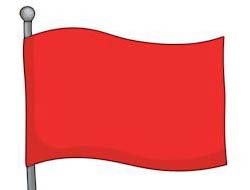
Red Flag
Red Beach Safety Flag
High hazard – High Surf and/or Strong Currents and Swimming not Recommended – If a lifeguard sends a red flag into the air, it means that hazardous conditions, including strong surf or currents, are present. Beach goers are advised to stay out of the water, experts say. I think we all understand that red means danger. That’s telling you that things are bad out there. Shore-break is a particularly dangerous, but uncommon, beach hazard that happens when the ocean’s waves break directly on the shore. The wave picks you up and drive you headfirst into the beach, which could break your neck.

Double Red Beach Safety Flag
Very Dangerous, Water is Closed to Public Use – The double red flag means the water is completely closed to the public. Often, this means very dangerous ocean conditions, such as strong rip currents, and beach goers should stay out of the water when these flags are present.
Beach goers can even be arrested when entering the beach if a double red flag is flying. Experts advise swimmers always to heed beach warning flags to avoid hazardous conditions.

Purple Beach Safety Flag
Dangerous Stinging Marine Life has been Spotted – Jellyfish, stingrays, sea snakes or other marine life are present in the water, and can cause minor injuries. This flag is not intended to indicate the presence of sharks. In this latter case the red flag or double red flag may be hoisted. This flag indicates that there may be marine wildlife present, such as jellyfish, stingrays and other dangerous fish. Beach goers should be alert and cautious of these animals.

Red over Yellow Beach Safety Flag
Recommended swimming area with lifeguard supervision – The area is protected by lifeguards. These flags may be used in pairs spaced apart to indicate a designated area or zone along a beach or waterfront that is most closely supervised or patrolled by qualified lifeguards, and where swimming and/or body surfing is permitted. These flags may be used singly to indicate that swimming is permitted in front of the area where the flag is flown and that the area is under the supervision of a qualified person.
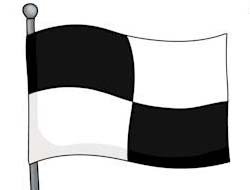
Black / White Quartered Beach Safety Flag
Meaning: Watercraft area – Surfing area – Swimming not allowed
These flags may be used in pairs spaced apart to indicate a designated area or zone along a beach or waterfront that is used by those with surfboards and other non-powered watercraft.
When you see a black and white quartered flag on the beach, it is important to be aware of the surfers in the water and avoid entering the designated surfing area. Surfers typically have the right of way in these areas, and it’s important to be mindful of their movements and avoid interfering with them.

Red / White Quartered Beach Safety Flag
Meaning: Leave the water immediately due to emergency
When the red and white flag is hoisted you must leave the water at once! The emergency can be the presence of a shark, contaminated water or if the lifeguard needs to search the water for a lost person. The double red flag can also be used for these kinds of emergencies. Get out right away!
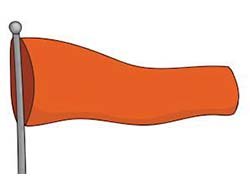
Orange Windsock Beach Safety Flag
Meaning: Offshore winds present, inflatables should not be used
An orange windsock beach safety flag is used to indicate potentially hazardous wind conditions at the beach. This type of flag is typically flown in areas where strong offshore winds are present, which can create dangerous currents and rough surf conditions.
When an orange windsock beach safety flag is flown, it is important for beachgoers to exercise caution and avoid entering the water if they are not experienced swimmers or if they are not comfortable in rough surf conditions. Even strong swimmers can be quickly swept out to sea in strong currents or powerful waves.
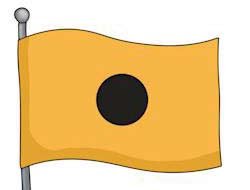
Yellow / Black Ball Beach Safety Flag
Meaning: Surfboards and other non-powered watercraft are not allowed
When this flag is up it means that you need to leave your board at the beach, because it’s a non-surfing (or any other types of non-powered watercraft) area.
Storm Flags
Storm flags are a type of flag that is used to indicate severe weather conditions, particularly strong winds, at sea or on land. The purpose of storm flags is to provide a visual warning to mariners or other people in the area of impending danger, so they can take appropriate precautions to protect themselves and their vessels or property.
Gale and hurricane warnings are indicated by specific flags. Gale warnings are indicated by solid red pennants, with one pennant flown to indicate a small craft advisory and two flown together to indicate a gale warning for winds of 39 to 54 mph. The hurricane flag is a red square with a black square in the center, with two of these flags flown together to indicate a hurricane with sustained wind speeds of 74 to 156 mph or more.
In addition to these flags, there are also various weather flags that were used in the past to communicate weather changes, particularly in areas where boats were on the water and could be affected by weather conditions. While many of these flags are no longer in use due to the advent of radio and the internet, they were helpful in communicating weather changes and providing warnings to those on the water.
Below are several different types of storm flags, each with a slightly different meaning:
